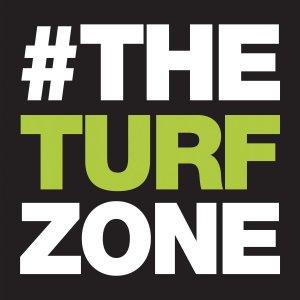The Turf Zone Podcast

Mississippi Turfgrass Association – Partnership for Pollinator Friendly Lawns
Mississippi Turfgrass – Jay McCurdy and Isadora de Souza There are an estimated 40 to 50 million acres of turfgrass in the United States, approximately 40% of which is maintained lawn around homes, places of business, and institutions. These living systems play an important role in society by providing places of gathering, recreation, and community cohesion. Turfgrass also provides important ecological services, such as carbon sequestration, noise abatement, and temperature moderation. Unfortunately, because the modern “American lawn” is often maintained as a monoculture, it lacks species richness and habitat for pollinating insects. Mississippi State University, Auburn University, and the University of Georgia are partnering to enrich lawns through best management practices (BMPs) and inclusion of amenity plant species that will attract and sustain pollinating insects. In April 2020, we proposed a project to create BMPs and stakeholder training that will result in more sustainably managed turfgrass systems for the improvement of pollinator habitat. The USDA-National Institute of Food and Agriculture funded our $493,000 project in the beginning of 2021. The project will employ at least three graduate students (one at each institution) for the project. At Mississippi State, coauthor Isadora de Souza will manage much of our state’s research responsibilities. As part of the project, we will identify pollinator friendly turfgrass alternatives and amenity forb species that meet the societal and cultural demands of traditionally maintained southeastern United States urban greenspace while also increasing pollinator habitat resources. The project will disseminate findings through a comprehensive Extension outreach program designed to be delivered by specialists and county agents. This program will include field days, small-group trainings and webinars, publications, and other outreach activities (e.g., master gardeners, regional and national stakeholder meetings). A website (RefugeLawn.com) will be created for stakeholder interaction, and we are also assembling a stakeholder advisory board. Follow our progress on Twitter: @RefugeLawn. Our research will address the following: * Pollinator habitat and pollinator visits on common turfgrass weeds and other amenity turfgrass forbs of the southeastern United States. * Effects of turfgrass species selection and cultural practices on forb establishment and persistence as well as effects upon pollinator visits. * Stakeholder preference for pollinator habitat within maintained turfgrass systems. Current BMPs for pollinator habitat inclusion: * Add flowering plants. Increasing the floral resources in lawns and public greenspace can be achieved by mowing less frequently, planting flowers, converting grass to flowers, and enhancing grass with flowers. * Let spring “ephemerals” flourish. Spring emerging plants (sometimes considered “weeds”) provide rich rewards for pollinators that are active early in the spring, and they are especially beneficial for native and less common pollinator species, which are less likely to be adapted to monoculture environments. * Delay and reduce mowing frequency. Decreased disturbance is associated with greater abundance and richness of pollinators and floral resources. Since many domestic gardens and public greenspaces are comprised of large lawns, reducing and delaying mowing intensity can have a great effect. * Avoid broadcast applications of insecticides to lawns and gardens that may negatively affect pollinating insects. Broadcast applications should be applied only according to label directions. Use common sense and avoid application to flowering plant species. Turfgrass managers can minimize pollinator exposure to insecticides by restricting foliar insecticide applications to early morning or late ...






 Visit Podcast Website
Visit Podcast Website RSS Podcast Feed
RSS Podcast Feed Subscribe
Subscribe
 Add to MyCast
Add to MyCast